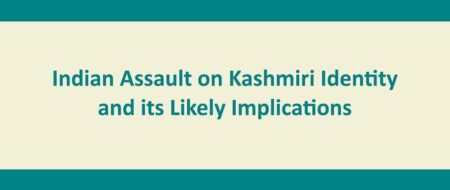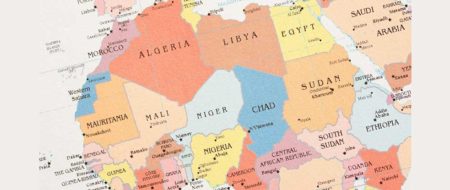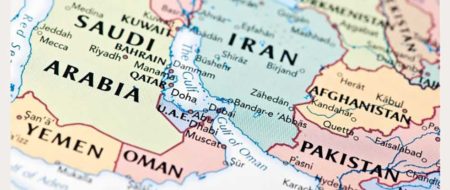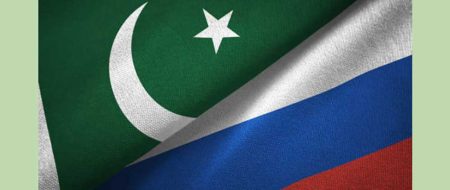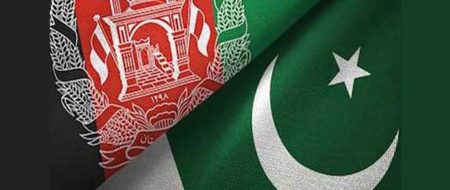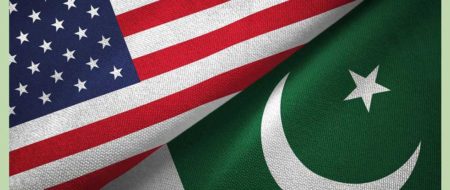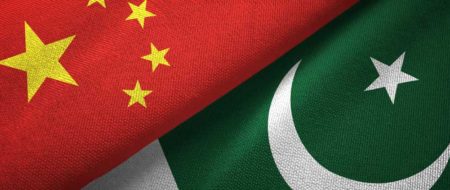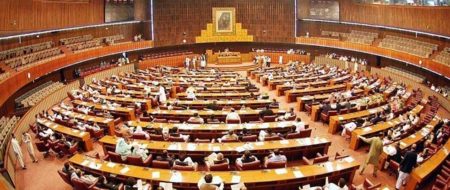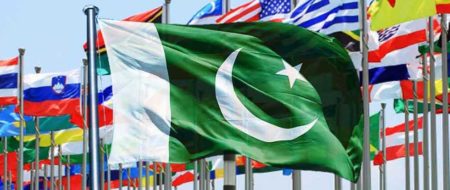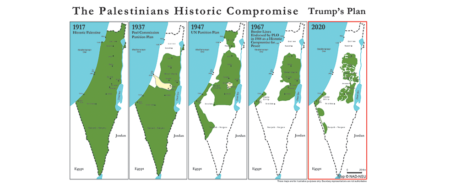Taliban and Islamic Courts Union: How They Changed the Game in Afghanistan and Somalia?
An analytical look at the unique social mobilization capacity shown by revolutionary Islamic movements in two war-torn countries.
Policy Perspectives , Volume6 , Number2, July – December 2009
Abstract
[This research seeks to explain why and how in 1996 the Taliban movement in Afghanistan, and in 2006 the Islamic Courts Union (ICU) in Somalia, gained such widespread momentum as to decisively remove a seemingly intractable civil war stalemate and create a centralized political order.This paper argues that, in these two religiously homogenous yet fragmented states, revolutionary Islamic movements demonstrated a unique social mobilization capacity based on a) their ability to redefine local and national identities in a way that overcame pre-existing fault lines of conflict, b) their ability to frame the solution to civil conflict in simple, yet highly resonant and logically coherent terms, and c) the legitimacy and motivational power offered by charismatic religious leadership. Author]
The Taliban and Islamic Courts Union
The Taliban movement erupted onto Afghanistan’s political scene between 1994 and 1996, ending years of ethnic genocide at the hands of factional militias. In 2006, a similar revolutionary Islamic movement took shape in Somalia, and the Islamic Courts Union (ICU) gained supremacy over the many clan-based factions that had been vying for power since the early 1990s. While in power, both of these ultra-conservative Islamic regimes succeeded where all other movements had failed: they decisively won the civil war, and consolidated their power in the form of a centralized political system asserting physical control over cities, ports, and key economic resources. In both cases, the movements succeeded in monopolizing claims to religious symbols, images, and rhetoric, a feat that many other Afghan and Somali militias had attempted without equivalent success.
This paper looks at the role of strategic, cognitive-psychological, and emotional variables affecting individual decision-making in the two Islamic movements’ success in generating enough support across clan and ethnic divisions to create a centralized form of political order. The Islamic message was widely resonant during the initial assent of the Taliban and ICU movements, and the moderate Muslim population in Afghanistan and Somalia offered their tacit or direct support to the Islamic nation-building project. At their very outset, the Taliban and the Islamic Courts began as popular movements, supported by hopeful citizens looking to extract themselves from a Hobbesian “state of nature.” Once in power, both movements lost favor with significant portions of their publics; however, their ability to generate grassroots support during their initial phases allowed them to consolidate their power nevertheless. This raises the question: why did Afghans and Somalis across clan and ethnic divisions look to political Islam as the way to extricate the state from political chaos?
Support for the Taliban and ICU movements stemmed from both rational, strategic decision-making processes and culturally-informed emotional responses to Islamic frames.[1] This paper argues that in these two religiously homogenous but fragmented states, revolutionary Islamic movements demonstrated a unique social mobilization capacity based on (a) their ability to redefine local and national identities in such a way that overcame pre-existing fault lines of conflict, (b) their ability to frame the solution to civil conflict in simple yet highly resonant and logically coherent terms, and (c) the legitimacy and motivational power offered by charismatic religious leadership. These three factors led Afghans and Somalis to construct their own Islam-centered Leviathans.
Regarding the first factor, in both Afghanistan and Somalia, Islamic movements demonstrated a unique ability to create a unified national identity based on religion, which provided an alternative to the internal fragmentation of civil war. Central to the message of the Islamic movements was the argument that other non-Islamic identities, in particular clan and ethnic rivalries, were responsible for civil chaos; the solution of an Islamic supra-identity provided a normative framework for a future political order based on an inclusive conception of a nation-state.[2]
Through their use of Islamic frames, not only did the two movements usher in a new Islamic national identity, but they also presented similar diagnostic and prognostic framing mechanisms for understanding the civil war stalemates in their respective countries; they identified the “vice” of warlord corruption as the problem, and identified the “virtue” of religious piety as the solution.[3] By identifying religious piety as a solution to social and political problems, these ideas-by their very definition-demanded collective and individual action.
Finally, and perhaps most importantly, the social mobilization success of both movements may be attributed to the fact that they were led by charismatic religious figures, whose leadership drew upon widely resonant ideas and traditional mores about the Ideal Man. At the time of their initial political assent, the popular narratives surrounding Mullah Omar of the Taliban movement and Sheikh Sharif Sheikh Ahmed of the ICU depicted powerful images of heroism, religious piety, and personal sacrifice. These stories and legends demonstrated an enormous sway in the honor-based cultures of Afghanistan and Somalia, prompting a culturally-informed emotional mobilization in support of the Islamic movements’ cause.
Origins of the Taliban Movement in Afghanistan
Afghanistan‘s ethnic fragmentation had reached a violent peak during the Afghan civil war, which raged from 1992 to 1996. After a decade of devastating war against Soviet occupation, Afghanistan’s decentralized anti-occupation fighters turned against each other in a battle for power.[4] These competing militias were formed along the country’s ethnic divisions, and led by rapacious and predatory warlords who had survived the long war with the Soviets. All ethnic groups, all communities, and all regions of Afghanistan were directly affected by the ethnically motivated conflict.[5] While the diverse capital city of Kabul became the main stage of these turf battles, the entire countryside was divvied into private warlord fiefdoms with bloody borders.
Importantly, the Pashtun south was highly fragmented during the civil war period and there was no one ethnic warlord who acquired the allegiance of the Pashtun population as a whole. On the contrary, several warlords, most notably Gulbuddin Hekmatyar of Hizb-i-Islami and possibly Abdul Rasool Sayyaf of Ittihad-i-Islami vied for power in the Pashtun south, and some of their unruly militias used rape, extortion, violence, and other acts of terror to intimidate other minority ethnic groups as well as their own co-ethnics.
The Taliban movement developed as a direct response to the corruption of the Afghan civil war. Despite the fact that the Taliban movement emerged out of Pashtun southern provinces, the message and mandate of the Taliban movement was characteristically Islamic, and not ethnic.[6] Interviews with women in northern Afghanistan from a plethora of ethnic backgrounds (including those with very anti-Taliban sentiments) confirm that the central preoccupation of the Taliban was “Muslim or non-Muslim,” not “Pashtun or Tajik or Uzbek.”[7] The Taliban’s message of Islamic reform meant that they categorically rejected all of the mujahidin leaders of the old guard, regardless of ethnic identity. They fought as vigorously against Pashtun warlords, such as Hekmatyar and Sayyaf, as they did against the non-Pashtun warlords of the civil war period, deeming all of them to be un-Islamic and therefore ineligible for political inclusion.[8]
Importantly, while the Taliban espoused religious rather than ethnic credentials, ethnic competition did not go quietly in the face of this rising Islamic movement. On the contrary, the Taliban received far more uncontested local political support in the takeover of southern and eastern Afghanistan, which is predominantly Pashtun in ethnic composition, than they did in the ethnically diverse northern provinces.[9] While the Taliban took the city of Kandahar without firing a shot, their capture of Kabul in 1996 and of Mazar-e-Sharif in 1998 were heavily contested, the latter involving the indiscriminate massacre of the civilian population. Therefore, even though the Taliban were consistent in their message of religious identity over ethnic divisions, the strongest support for the movement was very rooted in the rural Pashtun south.
However, it was by unifying the previously divided Pashtun regions under the blanket of Islam that the Taliban were able to turn the tide in their favor. Pashtuns are the largest ethnic group in Afghanistan, and therefore consolidating Pashtun support under one leader and one movement tipped the balance in the civil war stalemate. Pakistan, recognizing the momentum and potential of this movement, placed its bets in supporting the Taliban over all other groups for control of the country. By draining the support bases of other fragmented, rival Pashtun militias in the south and east, the Taliban generated sufficient military momentum to push west and north successfully.
Importantly, since it was framed on religious identity rather than ethnic identity, the Taliban movement also had space for the inclusion of other ethnic groups that were willing sign on to the Taliban’s mandate. Therefore, despite the overwhelmingly violent character of their western and northern offensives, the Taliban ushered forth a new configuration of identity politics in Afghanistan characterized by religiosity rather than ethnic identities.
Origins of the Islamic Courts Union in Somalia
Somalia had been in a state of complete collapse for 15 years before the takeover of the Islamic Courts Union in 2006. The internal fragmentation of this ethnically and religiously homogenous state occurred along clan and sub-clan divisions. Since the collapse of Siad Barre’s regime in 1991, clan warfare, fuelled by illicit arms trafficking, had characterized Somalia’s political landscape,[10] and its capital, Mogadishu, had been a lawless battleground for competing militias. Rampant criminality, extortion, and violence consumed the country, and civilians were forced to pay rents to their own sub-clans’ predatory militias for defense against rival groups.
Interviews with militiamen in Bula Hawa and refugees at the Somali border indicate that genocidal rape campaigns targeting women from other clans were ubiquitous across the countryside.[11] In fact, as a culture of rape became entrenched in Somali militia life, Hawiye and Darod fighters took to raping women from their own sub-clan groups. Local militia, doped up on qaat, cocaine, and hash, regularly engaged in sexual violence, kidnapping, murder, and extortion at randomly established checkpoints, using this violence as a method of earning a living and exacting revenge on rival clans.[12]
Repeated attempts at negotiated settlement failed to produce tangible results for Somalis, while local warlords were appointed as “parliamentary representatives” in non-functioning governing institutions. These warlord-parliamentarians continued to run the countryside through their own private fiefdoms, setting up exploitative taxation systems and checkpoints, fighting turf battles against rival clans, and allowing their foot soldiers to systematically rape and terrorize members of rival communities.[13]
The Transitional Federal Government (TFG), constructed in 2004, was the most recent attempt at a reconciled Somali government and comprised of warlord-parliamentarians driven by clan warfare. The TFG utterly failed in bringing rule of law to the countryside. To date, the only enterprise that has managed to effectively “un-fail” the Somali state in any meaningful way has been the Islamic Courts Union, which violently wrested control of Mogadishu from the TFG in 2006.
The emergence of the ICU in Somalia has marked dissimilarities to the Taliban movement. Islamic courts emerged during the 1990s, not as a new militia driven to rout out old warlords, but as a mechanism for creating order in the Somali capital. In the absence of rule of law, Somalis from different clan factions in Mogadishu developed local, clan-run shari‘a courts as a way to adjudicate disputes and to try members of their own clan for criminal activity.[14] Supported by Mogadishu’s vibrant business community as a way to develop a more secure environment for trade, these religious courts delivered the closest semblance of institutionalized political authority within the collapsed state.[15] Each sub-clan had its own court, its own appointed judge, and its own hired militia to enforce its edicts. These courts developed a level of trust and respect among the Somali population and were seen as a local solution to the absence of state institutions. By 2000, the leaders of the courts recognized the need for a certain level of coordination amongst them to deal with issues that involved members of different clans. In 2004, the courts merged to form the Joint Islamic Courts administration, under the moderate Sheikh Sharif Ahmed and the more radical Sheikh Hassan Aweys.[16] This joint administration formed the basis for the ICU, which positioned itself ideologically in opposition to Mogadishu’s rapacious warlords. Importantly, the ICU openly declared that clan antagonisms (which formed the basis of warlord power) were the source of Somalia’s problems. This sentiment was widely shared by aggrieved and desperate Somalis, adding to the legitimacy of the Islam as an alternative form of governance.
Therefore, political Islam in Somalia emerged as a direct response to state collapse and lawlessness. Over time, these Islamic courts gained legitimacy because of their ability to create semblances of order in the midst of political chaos, and, importantly, because militias associated with the courts were considered to be more honorable than other militiamen.[17] The courts’ militias were indeed noticeably different from the unruly TFG and local militias. Hand-picked by Islamic leaders on the basis of their religious and personal character and trustworthiness, these Islamic foot soldiers gained a reputation for maintaining a clean and disciplined lifestyle. Most of them did not harass or assault women, use drugs, drink alcohol, chew the narcotic qaat, or engage in looting and extortion as other militias did.[18] Under the joint administration, the Islamic Courts worked to consolidate these courts fighters into a more unified militia group, which became commonly known as the “Shabaab.”[19]
Fearing the rising power of the ICU and the Shabaab militias, a group of Mogadishu warlords from the TFG and local businessmen established the Alliance for the Restoration of Peace and Counter-terrorism (ARPCT) as a countering force against Islamism, raising tensions between the two Somali groups. In June 2006, the ICU took direct action against the ARPCT, and mobilized the Shabaab militias in a battle for control of Mogadishu. Routing out the TFG warlords, the ICU took control of the city as a movement forged on the idea that religious identity was the solution to never-ending clan conflict. Within a few short weeks, the ICU-with the help of Mogadishu’s vibrant civil society and business community-managed to consolidate their reign over the capital city, dismantle militia checkpoints, and bring a level of stability to the capital that had not been seen since the collapse of the state in 1991.
The Islamic Courts presented a viable and coherent framework for a national identity based on religion, which was inclusive of members of different clans, and which demonstrated a political order that proved far more practical than the TFG model. Buoyed by their success in Mogadishu, the ICU leadership looked outwards, seeking to apply the Islamic solution across the unruly Somali countryside. Within six months, the ICU movement successfully extended its influence across the majority of Somalia, exerting direct control over large swaths of the country, and establishing an alliance control over the disputed Ogaden region in Ethiopia. The civil war stalemate ended as the balance of power shifted in favor of the ICU, which moved on to defeat the TFG-backed militias in the center and the south.
Changing Identities, Changing the Game
In order to understand why Islamic movements gained momentum in Afghanistan and Somalia, it is imperative to look at how the Taliban and ICU were able to manipulate identity politics within the failed states. While there are important differences in the emergence and evolution of the Taliban and ICU cases, both Islamic movements share common themes. Specifically, both movements sought to reframe individual identities along religious lines, as a direct mechanism for overcoming internal state fragmentation and conflict. Importantly, in failed states, which lack not only a government but also a coherent vision of a state, Islam has the capacity to act as a platform for national unity.[20]
By creating a religious national identity that is inclusive of diverse ethnic and clan backgrounds, the Taliban and ICU movements were able to recruit members from a wider support base than competing factions based on narrower identities. This change in identity politics is critical to understanding why Islamists have been able to overturn civil war stalemate. By drawing support from multiple factions, Islamists changed the balance of power in the stalemate.[21] Among the Pashtun populations, the Taliban were able to drain populist support away from rival Pashtun factions, including Hizb-i-Islami and al-Ittihad, and were able to move against more Tajik-dominated factions without provoking fear of ethnically driven genocide. Because the Taliban were preoccupied with religion rather than ethnic purity, radical Islamism was less of a threat to the survival of ethnic minorities than an ethnically motivated Pashtun group. Therefore, Tajik and other non-Pashtun militiamen could defect to or support the Taliban on the grounds of being co-religionists. While Pashtun dominance expectedly generated resentment among ethnic ideologues, non-Pashtun Afghans (with perhaps the exception of the Shi‘i Hazara population) could accept Islamic rule without fear of ethnic extermination. The Islamic premise of political identity under the Taliban became a mechanism for political inclusion that broke the pattern of civil war violence.
Similarly, while the ICU in Mogadishu were originally comprised of a predominantly Hawiye base (10 of 11 of the Mogadishu courts were from the Hawiye clan, particularly the Habr Gidir-Ayr sub-clan), the core principles of the movement were based on an inclusive Islamic identity, rather than an exclusive clan configuration.[22] While ICU expansion into the countryside faced varying degrees of resistance from entrenched clan-based militias, the Islamic concept had salience and appeal among disaffected Somalis who were exhausted by clan warfare and who were looking for hope. As such, Islamic leaders from the rival Darod sub-clans participated in and actively helped to shape the Islamic Courts movement.[23]
The stabilization of Mogadishu was an unprecedented success story, and presented a viable, coherent model of a new political order for Somalia, based on a common ideological and identity framework. By choosing an inclusive religious framework as their starting point, movement entrepreneurs could recruit support for the ICU from amongst the Darod, Rahanwein, Digil-Mirifle, and other clans. In fact, the Islamic Courts welcomed defections of fighters from any TFG militias, regardless of their clan background, disarming and then “re-training” them to become Shabaab fighters.[24] The fact that fighters from different clan factions defected to the ICU clearly indicates that the premise of ICU membership was not Hawiye clan membership. Traditional clan-based militia movements prohibit any such defection. The re-training of defected fighters into the Shabaab indicates that the ICU was interested in generating a new identity and a new mandate for its soldiers.
By changing the identity politics within the state, the Islamic movements in both Afghanistan and Somalia were able to change the configuration of the game. That is, prior to the Islamic movements, both cases under investigation represented an ideal type of the prisoner’s dilemma model, with a lack of trust between rivals resulting in defection and loss for all parties. While each faction might optimally have preferred cooperation over defection, the desire for order was undermined by absence of social capital, despite countless iterations of the game. The product was a sub-optimal outcome for all parties, or in plain language, continuing civil war stalemate. Understood this way, this game theoretic model explains state failure as the outcome of mutual “defection,” resulting from an absence of trust between parties.
But even if we agree that an optimal outcome is the creation of a common governing institution, why were Islamists able to change the payoff structures for parties to the game to make this possible? I posit that these Islamic movements completely redefined actors’ identities, thereby changing in-group and out-group conceptions. Individuals could choose a supra-Islamic identity first, and Tajik or Uzbek, Darod or Hawiye label second. Old identities were not erased, but new identities were constructed to take precedence over them. By constructing new in-group identities, Islamic movements could drain the support bases of their rivals, changing the map in a way that the civil war stalemate ended. By changing the boundaries of political identities, the Taliban and ICU created a new political landscape.
Once the initial momentum generated by the Islamic movement indicated that the balance of power had moved away from the stalemate configuration, the strategic decisions of all fighters shifted to reflect this new reality. That is, this reframing of identities does not necessarily mean that individuals joining Islamic movements either felt or believed that they had become more Muslim and less ethnic/clan-affiliated than they were before. On the contrary, as Rogowski’s work on identity and rational choice points out, shifting identities and allegiances to a different in-group, out-group framework can be immensely strategic.[25] For example, when presented with an Islamic movement, minority ethnic groups, tribes, and clans that are without sufficient protection under old identities might feel better served by adopting a broader Islamic identity. A Tajik living in a predominantly Uzbek region might therefore calculate that she would be afforded greater protection under the Taliban than she would under ethnically-driven warlords. Therefore, under conditions of state failure, where identity politics result in a mutually hurting stalemate, a reframing of identities that undermines the prisoner’s dilemma trap can present an appealing alternative.
Furthermore, this seemingly populist shift towards Islamic identities (and away from ethnic or clan affiliations) is subject to strategic calculations and bandwagon effects. For example, in Afghanistan, switching sides is a very common survival strategy, as militia fighters carefully watch the trajectory of a conflict to be sure to be on the winning side. Interviews in Balkh province indicate that some militiamen literally changed out of their old uniforms upon receiving word of the Taliban advance on Mazar-e-Sharif, only to join sides with and eventually become the new police force for the Taliban movement.[26] Abandoning their old ethnic identifications and joining the Pashtun-dominated Taliban movement, these militiamen seamlessly transitioned from rapacious militia activity to the work of enforcing the Taliban’s extremist version of Islamic law.[27] Leaders were also frequently bought off to switch sides, adding multiple dimensions to the strategic calculus of choosing sides.
Once the Taliban movement generated sufficient momentum to tip the scale, other local commanders shifted their loyalties and accepted the Taliban’s authority. These new converts did not necessarily have any change of heart or experience a sudden increase in their religiosity, but by inclusion in the Islamic movement, they did exhibit a change in behavior to conform with the identities and mandates espoused by that movement.
Similarly, defections of militiamen to the ICU may also have been based on strategic thinking. Fighters from the Rahanwein Resistance Army (RRA) and Jubba Valley Alliance (JVA) forces defected in swaths in the face of defeat at the hands of the more powerful and advancing Shabaab.[28] These defections were not necessarily the result of ideological transformations that reframed conceptions of identity. Rather, these militiamen evaluated their odds in the battlefield and made the decision to defect as the most viable course of action to ensure their survival. Knowing the ICU based its membership on religion and not clan affiliation, these defecting militiamen could surrender to the Islamists with the confidence of knowing that their lives would be spared and that they could be integrated into the new movement. The ICU then disarmed and “retrained” these defected TFG militiamen as Shabaab fighters, and sought to integrate and incorporate them into the Islamic movement’s mandate.
Therefore, both identity and interest have worked symbiotically in Afghanistan and Somalia. Strategic objectives determined which identities were chosen and given significance, and these new identities then continuously shaped and transformed the strategic environment.
Framing Islamic Movements
While the reconfiguration of identities was integral to the success of the Islamic movements, it is important to examine the reason that religious identity was widely accepted as a political solution to state failure. That is, why did the frames of these Islamic movements resonate with Afghan and Somali supporters? I argue that the diagnosis and prognosis of the civil war by the Taliban and ICU drew upon interpretive schemata that were widely held in Afghan and Somali societies, and which generated positive relational thinking towards the movement’s stated objectives. Specifically, I propose that widely held cultural schemas and religious meta-narrative informed the popular interpretation of and emotional response to Islamic movement frames.
Benford and Snow define “framing” as the active and dynamic process of interpreting and constructing reality, in which movement entrepreneurs are actively involved in the production of meaning.[29] Movement entrepreneurs make “diagnoses” of problems and offer their “prognoses” for correcting them.[30] Whether those diagnoses and prognoses result in popular mobilization depends on how resonant the diagnostic and prognostic framing is, based on the existing cultural, cognitive, and material context. If the diagnostic and prognostic frames connect to people’s feelings and experiences at large, then movement entrepreneurs can prompt people to become involved in the movement.[31]
The conditions on the ground in Afghanistan in 1994-96 and in Somalia in 2004-06 gave credibility and legitimacy to the Islamic movements in both countries. Almost all Afghans and Somalis universally blamed local warlords and divisive identity politics for their security woes, which gave credence to Islamic movements’ calls for total social and political reform.
Both the Taliban and the ICU presented a solution to state failure, which proposed a coherent political model based on highly resonant and widely held religious ideas. However, the Islamic message acquired its legitimacy, not simply through the statement of a series of lofty religious beliefs, but through the personification of those ideals in the movement’s leadership. Both Mullah Omar and Sheikh Ahmed Sheikh Sharif rose to fame and power surrounded by stories of personal heroism and spiritual triumph, which exemplified the ideals upheld by the movements they led.
In societies that have a strong oral tradition, such popular legends, myths, and stories constitute a powerful form of political propaganda; in Somalia and Afghanistan, they gave social legitimacy to movement objectives and generated grassroots support for the Islamic agenda. The authenticity of the movement articulators and the narrative fidelity of the stories surrounding them mobilized individuals to join the Islamic cause. Emotional and highly resonant with traditional religious and cultural mores, these leaders’ personal stories generated a spirit of revivalism and hope among disempowered Afghan and Somali men.
Arguably, these stories constituted charismatic leadership, which had a profound mobilization capacity among the target audience. Charismatic leadership changes the values, goals, needs, and aspirations of followers, calling them to action “above and beyond the call of duty.”[32] This call to arms is a highly emotional process, wherein the follower finds personal meaning and a sense of duty in action, resulting in voluntary commitment to the leader and the cause. Charismatic leaders raise individuals to a level of self-transcendence, elevating followers’ needs from “lower to higher levels of Maslow’s hierarchy.”[33] In both the Taliban and ICU cases, the personal stories and character attributes of the Islamic leader constituted a form of charismatic leadership that generated movement mobilization.
The Legend of Mullah Omar
While there are multiple mythical stories about Mullah Omar’s rise to power, the most credible tale is almost ubiquitously known in Afghanistan, especially in the Pashtun south. In Afghanistan, news, rumors, and information travel through a profoundly well-connected network of oral communication, which developed over the course of the mujahidin’s long fight against Soviet occupation. While the complete veracity of its specific details may never be fully determined, the story of Mullah Omar caught like wildfire during the initial rise of the Taliban. Its emotional and psychological impact in mobilizing support for the Islamic movement was profound.
In 1994, in the midst of the civil war period, the Afghan people were at the mercy of roaming gangs of militiamen that would pillage, kill, and rape. The raping of women and girls was physically, psychologically, and culturally traumatic for Afghans, who regarded this type of assault as the single most extreme violation of personal honor. According to the legend, Mullah Omar was a simple and poor local cleric in Kandahar province, who took up arms when he heard news that two teenaged girls from his village had been kidnapped by a local commander and were being gang-raped at his military base. In an act typifying Pashtun bravery and gall, Mullah Omar gathered together no more than a handful of his religious students, or taliban, and staged a direct assault on the powerful commander’s forces. The story goes that there were only 30 Taliban with a handful of rifles between them, facing off against a well-established, predatory militia. Despite the odds, the Taliban reigned triumphant, defeated the enemy forces, freed the captured girls, and arrested the commander. Mullah Omar ordered that the rapist commander be hung from the barrel of a tank and paraded through the streets, as an example to all who dared to violate Afghanistan’s daughters.
Several other stories have circulated about Mullah Omar and his band of holy warriors rising up against commanders that abused Afghan girls and boys and tearing down exploitative militia checkpoints that were subjecting the local population to extortion. The Taliban gained a reputation for heroism and piety by helping those suffering under the tyranny of local warlords, and they took a particular stand against the rampant sexual violence. “Omar emerged as a Robin Hood figure, helping the poor against the rapacious commanders. His prestige grew because he asked for no reward or credit from those he helped, only demanding that they follow him to set up a just Islamic system.”[34]
These legends, and many other versions, proved to be highly resonant and profoundly emotionally evocative in Afghanistan, drawing as they did upon the most deeply held values of Pashtunwali[35] and religious piety. Several factors affected the popular reception of this tale: the religious and cultural values embedded in the story; the lack of physical, especially sexual, security across the country during this time period; and the unmet emotional and spiritual needs of young Afghan males who were disenchanted with the political parties and warlords of the civil war period.
Motivational framing is highly emotional, as movements must not only convince potential adherents of the correctness of their arguments, but also impassion them to take personal action.[36] In Afghanistan, thousands of Afghan volunteers from villages were emotionally and psychologically impacted by the word-of-mouth stories of Mullah Omar and his band of holy warriors, and prompted to leave their homes to join what they saw as a movement with moral legitimacy. The call to arms made by the Taliban leadership and the desperate urgency of the situation on the ground had emotional resonance among disaffected and disempowered young Afghan men, who sought ownership over their own lives.
The Taliban’s moral legitimacy was rooted in the personification of the movement in the charismatic leadership of Mullah Omar. His personal stories of heroism and self-sacrifice served as the proof to young recruits that the Taliban were sincere in the values they articulated. Mullah Omar therefore served as a rallying point for popular mobilization, providing hope, purpose, and imagination to an entire generation of young Afghan men, who lacked viable alternatives. Their families’ experiences of terror at the hands of local militias and their need for meaning and spiritual and emotional fulfillment prompted these young men to mobilize in response to the Taliban’s call.
The Legend of Sheikh Sharif Sheikh Ahmed
The story of Sheikh Sharif’s rise to prominence shares a similar quality of boldness and courageous action as the legend of Mullah Omar. This narrative is better recorded than its Afghan counterpart, owing to an established and dedicated core of Somali journalists based in Mogadishu. Much like the story of Mullah Omar, Sheikh Sharif’s tale exemplifies personal heroism and self-sacrifice, and serves an emotionally evocative vindication of victims of violence.
In 2002, Sheikh Sharif Sheikh Ahmed returned to Somalia after several years of Islamic education. Having studied Islamic law at universities in Egypt, Sudan, and Libya, his academic credentials led to his involvement in a local clan-based shari‘a court in Jowhar. Leaving Jowhar later that year, Sheikh Sharif moved to Mogadishu to take up a job as a local schoolteacher at Jubba Secondary School in the crime-ridden neighborhoods of the northern Siisii district. In 2003, local gangsters kidnapped one of Sheikh Sharif’s students, 12-year old Abdulkadir. When the militia demanded a huge ransom for his safe return, Abdulkadir’s parents turned to his schoolteacher for help.[37]
According to the story, Sheikh Sharif responded to this call for help by developing a grassroots community movement. Within three days, Sheikh Sharif organized the leaders in the Siisii community of Mogadishu to construct a local Islamic court, which appointed him its Chairman. Through this newly established institution, Sheikh Sharif secured the release of Abdulkadir and returned him safely to his parents.[38] Over the course of the next two years, similar stories emerged around the court system, which multiplied in numbers in northern Mogadishu in 2004, and ushered in unprecedented security.
Though the Islamic courts were more of a structured institutional response to lawlessness than a Taliban-like vigilante response, Sheikh Sharif was still very much a heroic and charismatic figure in his own right. Under his leadership, the courts’ militias captured Mogadishu’s rapists, gangsters, and thieves, creating a system of justice for the poor and victimized that had been absent in the country since 1991. Sheikh Sharif quickly gained a reputation as a political moderate, who was committed to consensus-based decision-making among clans. He was known as an educated, politically savvy leader, with a long-term vision for Somalia’s future. Importantly, Sheikh Sharif gained a reputation for exemplary personal moral conduct and religious scholarship. His reputation for personal honor and selflessness was bolstered by the fact that he sought no material gain for his service to the Mogadishu community.
The newly established and unified Shabaab militiamen also gained reputations for being more honorable characters. These boys, selected by the ICU leadership for their honest reputations, were trained by the courts to be vanguards of the Islamic movement. The Islamic leadership actively recruited young Somali men seeking purpose, justice, and meaning-young men who had no other life experience than war. The origins story of Sheikh Sharif, his reputation for personal piety and sincerity, and his success in stabilizing sections of Mogadishu gave the ICU a moral legitimacy in the city.
In the case of the ICU, Sheikh Sharif’s leadership provided a framework for self-conception and higher purpose that satisfied the emotional and spiritual needs of his followers.[39] The story of his personal triumph over militia gangs was deeply emotionally resonant among disaffected young Somalis, whose families and communities had been victimized by lawlessness.
Concluding Thoughts and Limits of this Argument
This paper has explored the initial wave of support for the Taliban movement in Afghanistan and the ICU in Somalia, at the very outset of these movements. Identities and interests, and emotions and strategic calculus have informed the popular response to these movements in their early phases. I have proposed that the reasons that these Islamic movements were able to tip the balance of power away from the civil war stalemate are that a) they presented a viable framework for national identity, b) they offered a logically coherent and emotionally and culturally resonant diagnosis and prognosis of the civil war problem, and c) they merged under charismatic leaders who exemplified the movements’ highest ideals. By attracting recruits from across factional divides and mobilizing these recruits against a defined enemy target, the Taliban and the ICU transformed the fault lines of conflict and the political and military landscape of Afghanistan and Somalia, respectively.
This argument does not address the loss of popular support that both the Taliban and the Shabaab have experienced in more recent years and months. In the end, both the Taliban and ICU movements have not been able to sustain their momentums, though each for different reasons. In Afghanistan, the moment that the balance of power tipped in favor of the Taliban movement, Mullah Omar went from being seen as a heroic defender of the poor and weak to being seen as a despot, whose version of security suffocated the country. Once the Taliban consolidated their military and political power, they established themselves as a crushing juggernaut that lost the hearts and minds of the Afghan people. The elimination of female education, the removal of women from the public sphere, and the destruction of Afghanistan’s priceless Buddhist statues outraged both Afghan citizens and the international community alike. The provision of asylum to groups such as al-Qaeda also drew the fury of the international community, although one view is that they were willing to hand over Bin Laden to a group of renowned Muslim scholars/elders.
However, it was with the support of the Afghan citizenry that the Taliban first generated its momentum, and by the momentum of Pashtun supporters that this Islam-centered Leviathan was created. Despite shock and resentment that was directed towards the Taliban after they consolidated power, the early period of Taliban ascent was marked by popular enthusiasm, volunteerism, and grassroots support for the movement’s objectives. Much like the pro-Khomeini students of the Iranian revolution who turned uncomfortable with the regime they helped create, many pro-Taliban Afghan recruits and supporters were quickly faced with an uncompromising Islamic regime that they could no longer control.
Similarly, once the ICU consolidated power, some Somalis became disillusioned with their approach to governance, especially their uncompromising laws concerning the ban of cigarettes and qaat. The business community, which had been instrumental in the creation of the courts system, also found itself politically disempowered at the hand of the new regime.[40] However, unlike the Taliban case, most Somalis were grateful for the respite in the lawlessness and criminality that had plagued Somalia for so long, and therefore remained overwhelmingly positive about the courts. Because the ICU had only six months in power before being overthrown by a US-backed Ethiopian ground invasion, it is not possible to know whether or not public opinion towards the courts would have grown negative in the long run.
However, since the fall of the ICU in 2007, Somalia has collapsed once again into intense intra-state violence, which has transformed relations between the ICU and the Shabaab. The Ethiopian invasion of Somalia radicalized the Shabaab, creating a new fault line of conflict between Eritrean-backed hardliner Islamic fighters and the Ethiopian-sponsored TFG. The Shabaab have dissolved into a renegade band of vigilante Islamists pitted against both foreign troops and TFG forces, no longer clearly controlled by any single authority. The fall of the ICU also marked a key split within the ICU: moderate leader Sheikh Sharif called for reconciliation with the TFG, while on the other hand, the more militant Shabaab broke away and formed a decentralized radical Islamic force, staunchly opposed to any negotiated settlement with the TFG warlords.
After over a year of bloodshed and in a desperate move to resolve the seemingly endless insurgency, in January 2009, the Somali TFG parliament appointed the once-overthrown ICU leader, Sheikh Sharif, as the new President of Somalia. The Shabaab and radical leader Sheikh Aweys literally declared war on their former leader, branding Sheikh Sharif a traitor and apostate for negotiating with the TFG. The Shabaab have rejected Sheikh Sharif’s leadership over the TFG parliament and have sworn to kill him.
Clearly, these two cases have significant differences, especially in their ongoing evolutions. Mullah Omar’s uncompromising attitude towards negotiated settlement has maintained his legitimacy as the leader of the Islamic resistance, while Sheikh Sharif’s attempt at reconciliation has led to his complete rejection by Islamic hardliners. However, despite the rapidly evolving conditions in both countries, comparison of the initial phases of development of the Taliban and ICU movements points to the importance of identity, frame resonance, and charismatic leadership in mobilizing action. This analysis has sought to highlight the role of strategic, cognitive-psychological, and emotional variables, while carefully trying to avoid oversimplified explanations that depict movement adherents as either irrational or given to zealotry.
Finally, this argument makes limited claims about causality, and acknowledges that there are multiple variables that shed light on the success of these Islamic movements, not the least of which is political interference and military support by neighboring states. Regional security complexes are absolutely critical to understanding domestic political dynamics in failed states[N1].[41] No explanation of the Taliban’s success can ignore the involvement of Pakistan; nor can any study of Somali Islamism justifiably ignore the role of Ethiopian-Eritrean rivalry. As these Islamic movements developed in Afghanistan and Somalia, new opportunities emerged for Pakistan and Eritrea to extend their political influence and check their regional rivals.[42] Without regional support, it is possible that these movements might have remained localized phenomena, with the Taliban controlling swaths of the Pashtun south and east, and the ICU controlling parts of Mogadishu and possibly other pockets. Importantly, support from self-interested neighboring states bolstered these cores of Islamists, and gave them the resources to expand their political ambitions countrywide.
However, a purely geo-strategic explanation for these particular Islamic movements is insufficient. Regional rivals have a long history of interference in Afghanistan and Somalia, which pre-dates the emergence of both the Taliban and the ICU. For example, during the early 1990s, Pakistan offered its military support to Hekmatyar’s Hizb-i-Islami group through the Peshawar agreement. Yet, despite active regional interference during Afghanistan’s civil war period, no other militia managed to decisively win on the battlefield. Similarly, Eritrea and Ethiopia also have a long history of supporting their own proxy groups in Somalia, none of which were able to tip the balance of power significantly enough to undermine the stalemate. Therefore, while acknowledging the importance of regional interference in exacerbating civil war, it is also essential to explore the domestic political dynamics of social movements emerging within failed states.
Bibliography:
Abdi Farah, Mohamed “Islamists welcome defected government militia in the capital” SomaliNet News, December 15 2006. <http://somalinet.com/news/world/Somalia/5825> (Retrieved last on February 11, 2009)
Benford, Robert and David Snow, David. “Framing Processes and Social Movement: An Overview and Assessment.” in Annual Review of Sociology 26 (2000, )26: pp 611–639.
Bokhari, Imtiaz. “Internal Negotiations among Many Actors: Afghanistan.”: in I. William Zartman (ed.) In Zartman, ed., Elusive Peace: Negotiating an End to Civil War: , edited by I. William Zartman. Washington, DC.: The Brookings InstitutionInstitute, 1995.
Goodwin, Jeff, James M. Jasper, and Francesca Polletta. Passionate Politics: Emotions and Social Movements: . USA: University of Chicago Press, 2001.
Haqqani, Husain. Pakistan: Between Mosque and Military. Karachi: Vanguard Books (Karachi, Pakistan), 2005.
Marchal, Roland. “Islamic Political Dynamics after the Somali Civil War: Before and After September 11.” In Alex de Waal (ed.) Islamism and its Enemies in the Horn of Africa: , edited by Alex de Waal. London: Hurst and Co. Publishers, 2004.
Menkhaus, Kenneth. Somalia: State Collapse and the Threat of Terrorism. Adelphi Paper, The International Institute for Strategic Studies, New York: Oxford University Press, 2004.
![]() “Somalia and Somaliland: Terrorism, Political Islam, and State Collapse.” In Rotberg, Robert (ed.) Battling Terrorism in the Horn of Africa:, edited by Robert Rotberg. Washington, DC: The Brookings Institute, 2005.
“Somalia and Somaliland: Terrorism, Political Islam, and State Collapse.” In Rotberg, Robert (ed.) Battling Terrorism in the Horn of Africa:, edited by Robert Rotberg. Washington, DC: The Brookings Institute, 2005.
![]() “There and Back Again in Somalia” Middle East Report Online, February 11, 2007. <http://www.merip.org/mero/mero021107.html> (Last retrieved on February 11, 2009
“There and Back Again in Somalia” Middle East Report Online, February 11, 2007. <http://www.merip.org/mero/mero021107.html> (Last retrieved on February 11, 2009
Rashid, Ahmed. Taliban: The Story of the Afghan Warlords. Chatham, UK: Pan Books, 2001.
Rais, Rasul Bakhsh Recovering the Frontier State: War, Ethnicity, and State in Afghanistan., Karachi: Oxford University Press, 2008.
Rogowski, Ronald. “Causes and Varieties of Nationalism: A Rationalist Account.” In Edward Tiryakian and Ronald Rogowski (eds.) New Nationalisms of the Developed West, edited by Edward Tiryakian and Ronald Rogowski: . New York: Allen and Unwin, 1985.
Rubin, Barnett R. The Fragmentation of Afghanistan: State Formation and Collapse in the International System. New York: Oxford University Press, 1995.
Shamir, Boas, Robert J. House, and Michael B. Arthur. “The Motivational Effects of Charismatic Leadership: A Self-Concept Based Theory.” Organizational Science Vol. 4, no. 4, (November 1993).
Van Notten, Michael. The Law of the Somalis: A Stable Foundation for Economic Development in the Horn of Africa. Trenton, NJ: Red Sea Press, 2005.
Wiktorowicz, Quintan, (ed.) Islamic Activism: A Social Movement Approach: Bloomingdale, IN: Indiana University Press, 2004.
Zartman, I. William. Elusive Peace: Negotiating an End to Civil War. Washington, DC: The Brookings Institution, 1995. “Somalia’s Moderate Islamic Leader” BBC World News January 22, 2007 <http://news.bbc.co.uk/2/hi/africa/5072268.stm> (Last retrieved on February 11, 2009)
[1] Goodwin et al., Passionate Politics.
[2] Wiktorowicz, Islamic Activism.
[3] Benford and Snow, “Framing Processes and Social Movement.”
[4] Rubin, Fragmentation of Afghanistan.
[5] Interviews in Kandahar, Kabul, and Mazar-e-Sharif, April 2005.
[6] Importantly, the Taliban’s redefinition of social identity from ethnic to religious did not bode well for the minority Shi’i Hazara population, who were killed by the Taliban in Herat and Mazar-e-Sharif. While the Taliban positioned themselves as defenders of Islam, Afghanistan’s Shi’i minorities experienced targeted religious persecution for practicing the “wrong type” of Islam.
[7] Interviews in Mazar-e-Sharif and Kandahar, April 2005.
[8] There were many mid-level commanders who accepted and supported the Taliban takeover. These commanders were either bought off with bribes to switch sides, or joined the movement for strategic or ideological purposes. However, no high-level commander with a history of human rights abuses, especially rape, was considered for political inclusion.
[9] Rais: 2008
[10] Zartman, ed., Elusive Peace.
[11] Interviews in Bula Hawa, Somalia, April 2007; and Hagadera refugee camp in Kenya, February 2005.
[12] Interviews in Bula Hawa, Somalia, April 2007.
[13] Interviews in Nairobi, Kenya, November 2003 and April 2007.
[14] Menkhaus, “Somalia and Somaliland.”
[15] Ibid.
[16] Ibid.
[17] Ibid., 133.
[18] Ibid.
[19] The term shabaab literally means “youth” in Somalia, reflecting the age of the Islamic fighters.
[20] Haqqani, Pakistan: Between Mosque and Military. Interestingly, since its partition from India in 1947, Pakistan aimed to resolve its internal fragmentation by establishing its national identity on religious lines. The concept of the Islamic Republic served as a basis for unifying the ethnically, linguistically, and culturally diverse Pakistani people.
[21] Bokhari, “Internal Negotiations among Many Actors: Afghanistan.”
[22] Kenneth Menkhaus, “There and Back Again in Somalia,” Middle East Report Online, February 11, 2007, http://www.merip.org/mero/mero021107.html (accessed February 11, 2009).
[23] Interviews, 2009.
[24] Mohamed Abdi Farah, “Islamists welcome defected government militia in the capital,” SomaliNet News, December 15, 2005, http://somalinet.com/news/world/Somalia/5825 (accessed February 11, 2009).
[25] Rogowski, “Causes and Varieties of Nationalism.”
[26] Interviews in Balkh province, April 2005.
[27] Interviews in Balkh province, April 2005.
[28] Farah, “Islamists welcome defected government militia in the capital,” December 15, 2005.
[29] Benford and Snow, “Framing Processes and Social Movement.”
[30] Ibid.
[31] Ibid., 614-19.
[32] Shamir et al, “Motivational Effects of Charismatic Leadership,” 579.
[33] Ibid.
[34] Rashid, Taliban.
[35] Pashtuns live according to a traditional honor code called Pashtunwali (the way of the Pashtuns), which fuses both Islamic and pre-Islamic practices. Central to this code are: honor (gheyrat), pride (namus), courage and bravery, particularly in protecting one’s household (nang), generosity in hospitality (melmastia), offering of refuge (panah), asylum for those that surrender to you (nanawatai), and taking of revenge (badal). The ethnic identity of the Pashtun is based not only on his language and lineage, but also on the understanding and acceptance of these core concepts.
[36] Goodwin et al, Passionate Politics and Snow and Benford, “Framing Processes and Social Movement.”
[37] BBC World News, “Somalia’s Moderate Islamic Leader,” January 22, 2007, http://news.bbc.co.uk/2/hi/africa/5072268.stm (accessed February 11, 2009).
[38] Ibid.
[39] Shamir et al, “Motivational Effects of Charismatic Leadership.”
[40] Interviews in Nairobi, Kenya, April 2007.
[41] Lake and Rothchild: 1998.
[42] Interviews in Islamabad, Pakistan, March 2006.
[N1]Footnote 41: The reference cited is missing from the list. Pls add.



